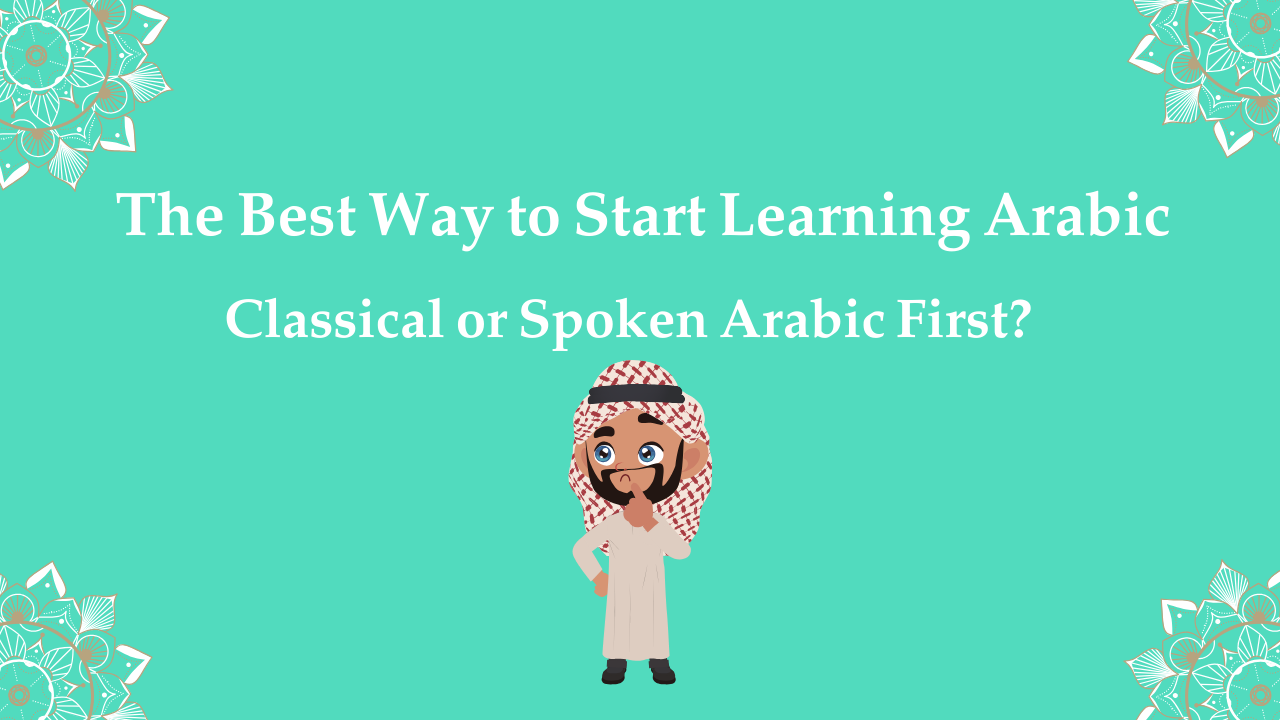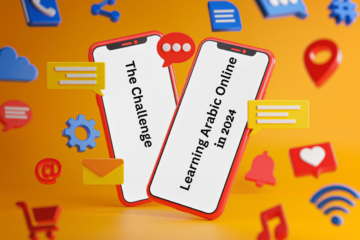The Best Way to Start Learning Arabic: Classical or Spoken Arabic First?

Classical Arabic First, Then Spoken Arabic
In my experience over the past fifteen years teaching Arabic to non-native speakers, the typical scenario is that students start by studying Classical Arabic for a few years. This form is excellent for reading Arabic literature, understanding news, and reading the Quran. However, many students later realize that their skills are limited to these areas and do not easily transfer to everyday conversation.
Transitioning from Classical to spoken Arabic can be challenging. The difficulty doesn’t lie in the spoken dialects themselves but in the confusion caused by switching from the formal to the colloquial language. Students often have to replace many words and expressions they learned in Classical Arabic, which can be frustrating. Since Classical Arabic isn’t commonly spoken in daily life in the Middle East, students find that they need to unlearn certain habits, which complicates the learning process.
The Importance of the First Six Months
The first six months of learning any language are crucial. During this period, the brain is more receptive to new words and vocabulary, and these initial lessons often stick long-term. However, as students progress, they may find it harder to memorize new words and may struggle with sound similarities, which is particularly common in Arabic. Small changes in vowels or pronunciation can significantly alter the meaning of words, adding to the complexity.
Challenges with Mixing Classical and Spoken Arabic
Those who start with Classical Arabic and later try to learn spoken Arabic often struggle to sound natural. They may end up mixing the two, creating sentences that are a blend of Classical and spoken Arabic. This issue is common among students who follow this learning path. While it’s possible to overcome these challenges, it requires a lot of effort, careful study, and a clear understanding of the differences between the two forms of Arabic.
The Main Challenge
The primary challenge when starting with Classical Arabic(MSA) is the need to learn and replace many words and phrases when transitioning to spoken Arabic. This shift often involves rethinking sentence structures and vocabulary, which can be daunting for learners.
Learning Arabic: Starting with Spoken Arabic, Then Moving to Classical Arabic
Choosing to start with spoken Arabic before learning Classical Arabic offers a different and potentially smoother path. If you spend your first six months focusing on a spoken dialect, you’ll quickly gain confidence in your ability to communicate in Arabic. This approach mirrors the natural way children in the Middle East learn their language; they begin with their regional dialect—be it Levantine, Gulf, or Egyptian Arabic—before tackling formal Arabic.
Spoken Arabic is essentially a simplified version of Classical Arabic, designed to facilitate easy and smooth communication among Arabs. The differences between dialects are relatively minor, and once you master one, you’ll find it easier to understand others.
Once you’re fluent in spoken Arabic, transitioning to reading newspapers or other forms of media becomes a matter of learning specific vocabulary related to those fields. For instance, if you want to discuss business topics, you can focus on the relevant terminology. This method reflects how native speakers expand their language skills—they start with a dialect and then learn additional vocabulary based on their interests or needs.
To achieve full fluency in Arabic, you need to be proficient in both spoken and formal Arabic. This is because discussing complex topics, such as business or current affairs, often requires using words and phrases from Classical Arabic.
In my opinion, starting with spoken Arabic offers a smoother learning curve. It allows learners to become comfortable with the language’s sounds and everyday usage before diving into the more formal aspects of Classical Arabic.
In conclusion, prioritizing spoken Arabic empowers learners to communicate confidently from the start, while providing a strong platform for further language development.


